- Home
- slideshows
- miscellaneous
- Elon Musk just revealed the 'final iteration' of SpaceX's biggest and most powerful rocket ship - take a look
Elon Musk just revealed the 'final iteration' of SpaceX's biggest and most powerful rocket ship - take a look
With Maezawa's moon mission announcement, Musk shared new images and details of the Big Falcon Rocket.

Musk first publicly discussed the BFR during a September 2016 presentation to the International Astronautical Congress. However, he has changed the spacecraft's design every year.
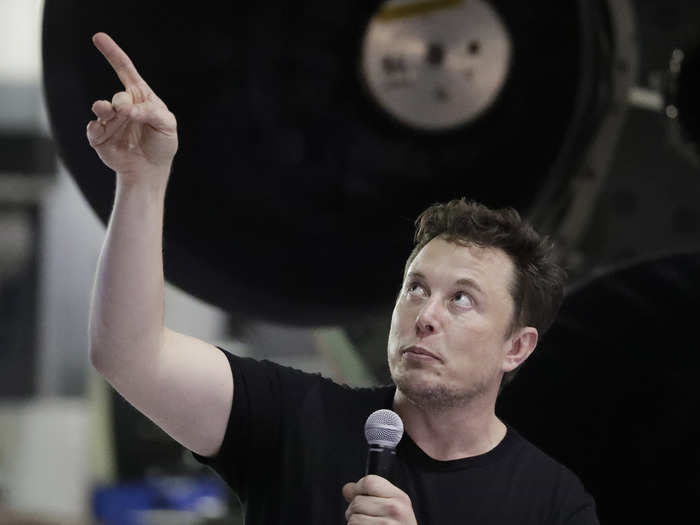
This year was no different, though Musk called the new BFR "the final iteration" of the design.
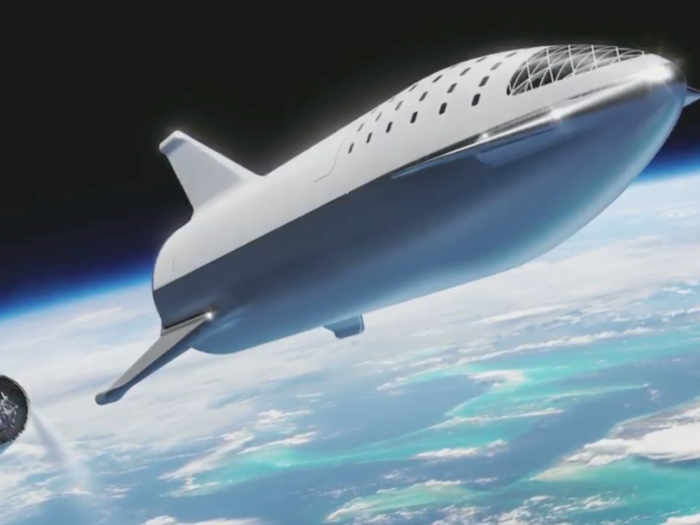
The new BFR grew nearly four stories: from 348 feet tall to 387 feet tall. However, its ability to haul into orbit a payload of about 100 tons stayed the same.
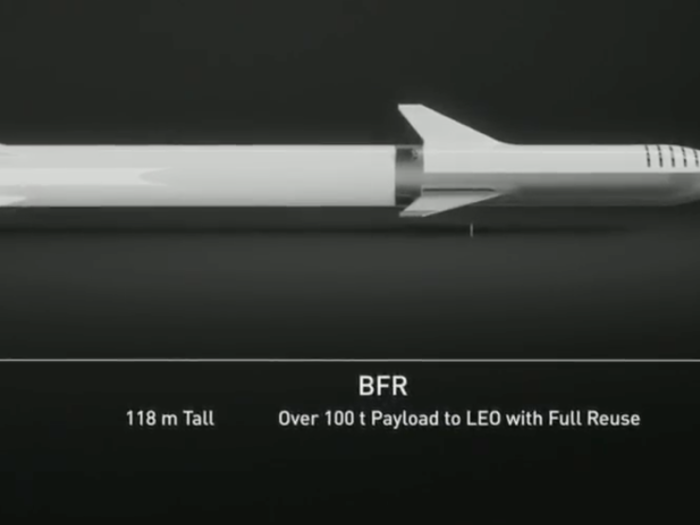
Musk said the booster is mostly the same design, but noted the spaceship saw major revisions compared to the version he presented in 2017 (shown here).
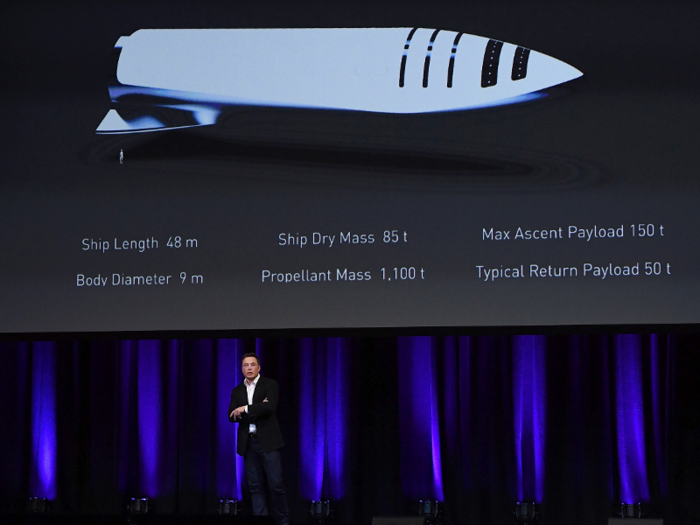
Here's an illustration of the 2018 version of the vehicle, sometimes called the Big Falcon Spaceship.
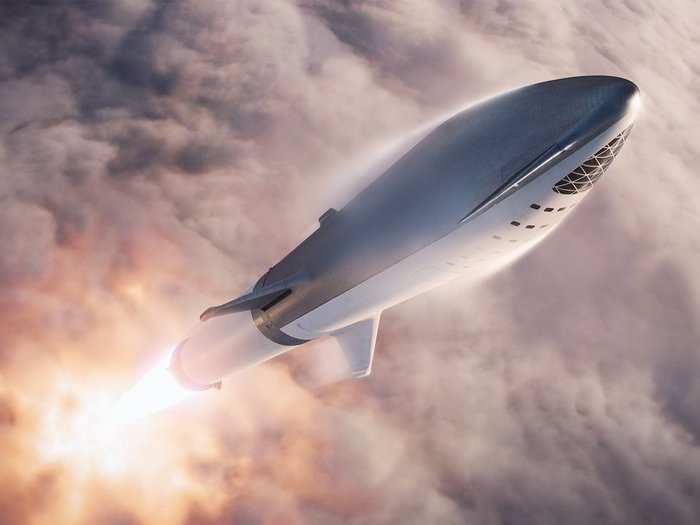
Instead of one "delta wing" on its side, the new spaceship (which rides atop the booster) has three larger wings.
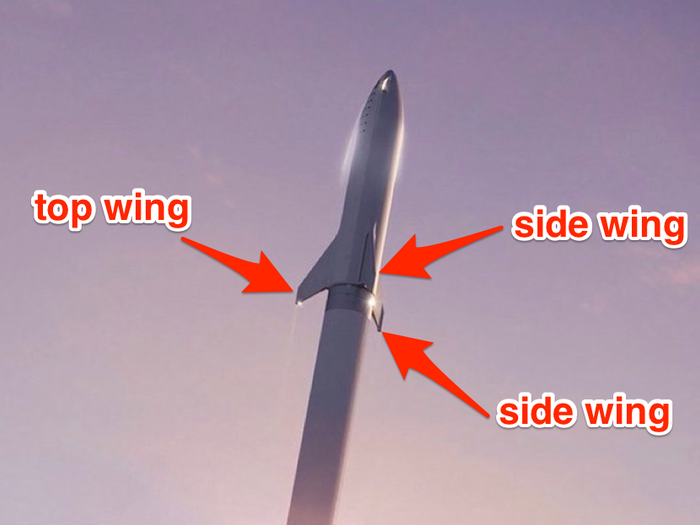
Musk said the wings will not only help a BFR spaceship fly through the air on Earth and Mars, but also serve as landing pads. It's a big change compared to the previous design, which called for pop-out legs. Also unlike the 2017 version, nearly a double decker bus' worth of cargo can be stored on the bottom of the ship for easier access after landing.
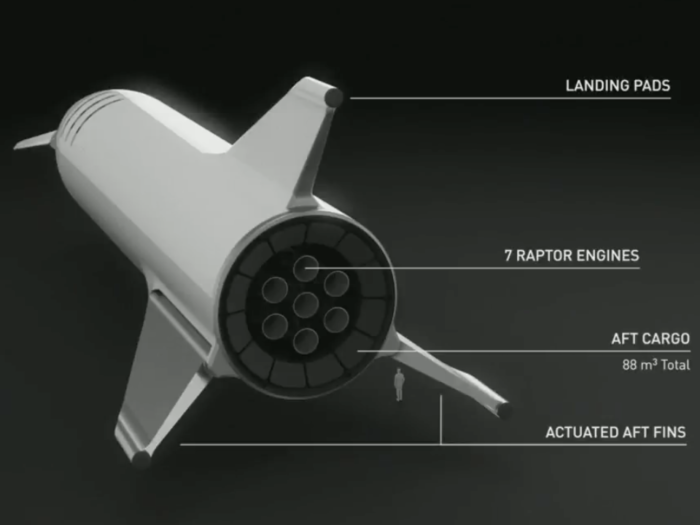
SpaceX engineers redesigned the spaceship's nose to add pop-out forward fins. The fins will help steer and stabilize the BFR spaceship while zipping through planetary atmospheres.
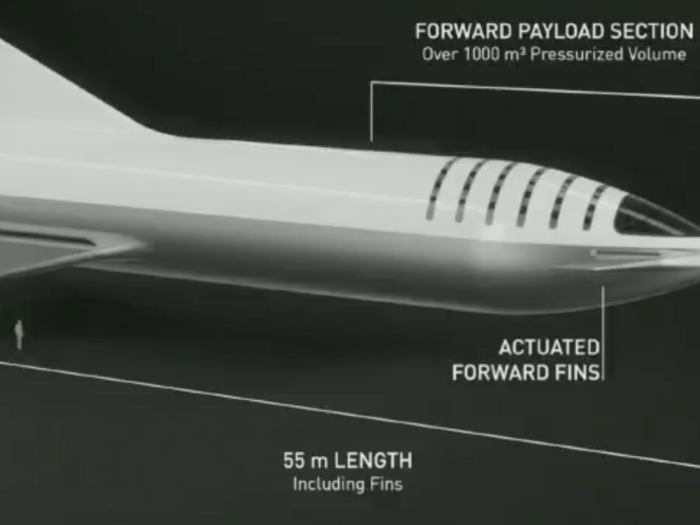
Like the prior spaceship design, though, a heat shield lining the bottom will help absorb the scorching heat of atmospheric reentry.
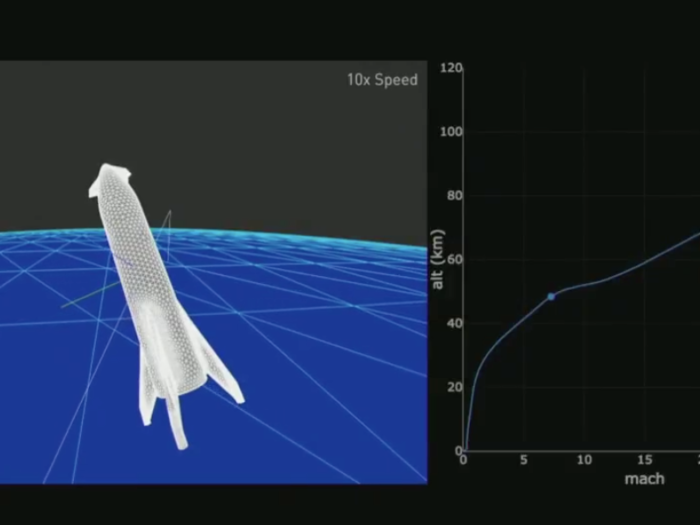
Once it has slowed down enough, the spaceship will open its grid fins and begin to fire its engines to a landing.
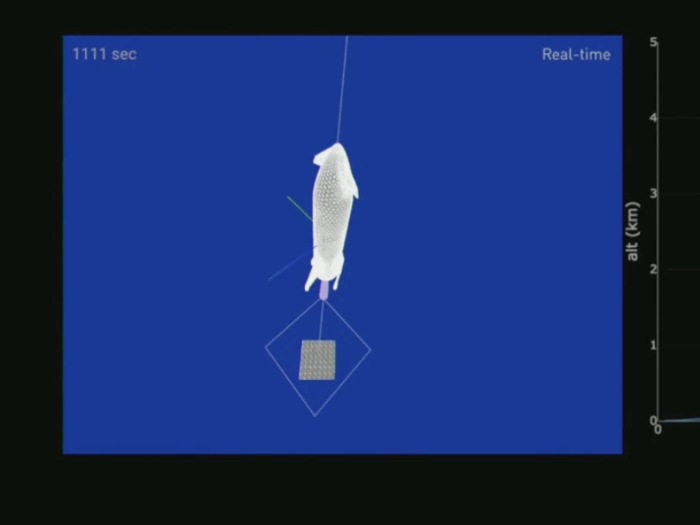
The scale of the ship is enormous. This illustration shows its bottom, and it looks enormous compared to journalists and SpaceX employees attending Maezawa's moon-mission announcement.
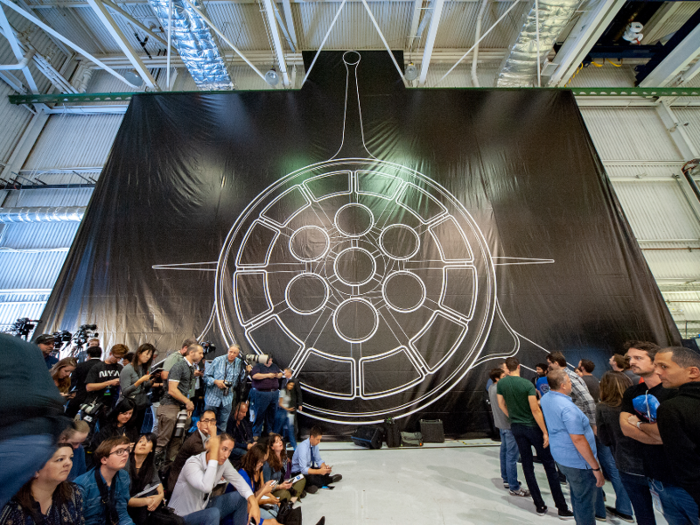
But the BFR is not a figment of Musk's imagination. Parts for the first prototypes are coming to life inside a 20,000-square-foot tent built by SpaceX at the Port of Los Angeles.

Cylindrical sections are made out of carbon-fiber composites inside the tent — at least until the company finishes a larger, more capable, and permanent facility. This photograph shows a roughly 30-foot-diameter tool in the tent that SpaceX is using to build its BFR sections.
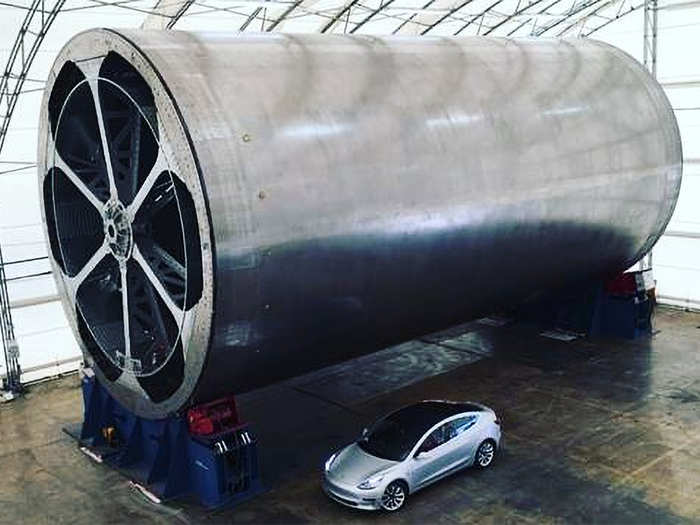
The parts are enormous, as Maezawa demonstrates in this photo.
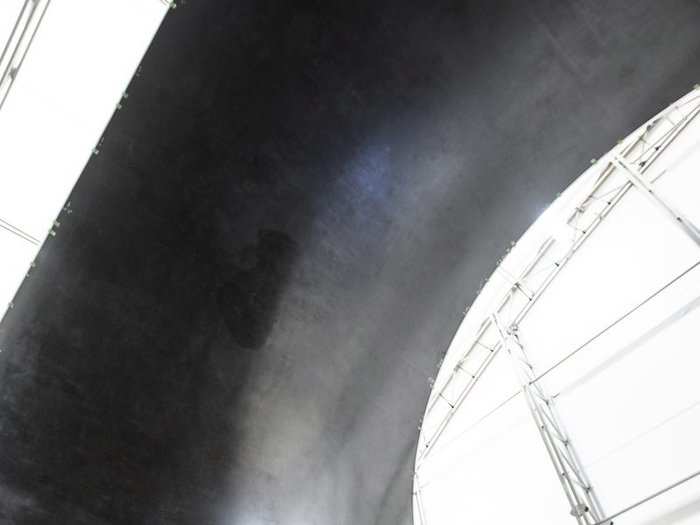
Once the tool is wrapped in carbon-fiber composites and cured with heat, workers disassemble the tool to free and remove its carbon-fiber barrel section.
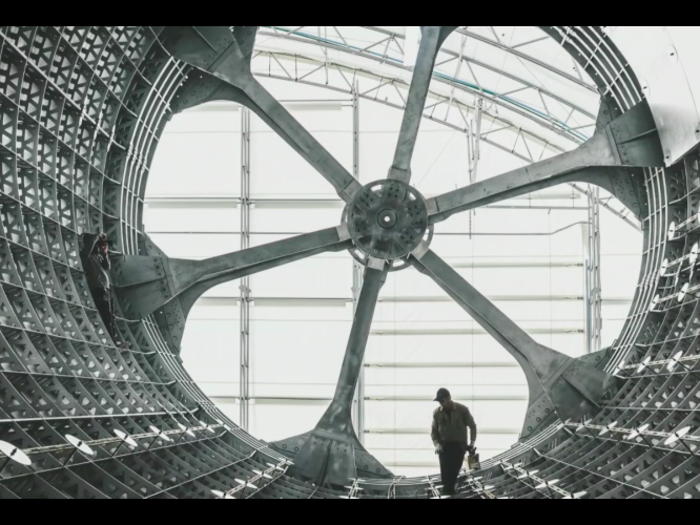
Perhaps most importantly, Musk said, SpaceX built and tested full-scale Raptor rocket engines for the BFR. Without the engines, the spacecraft wouldn't fly.
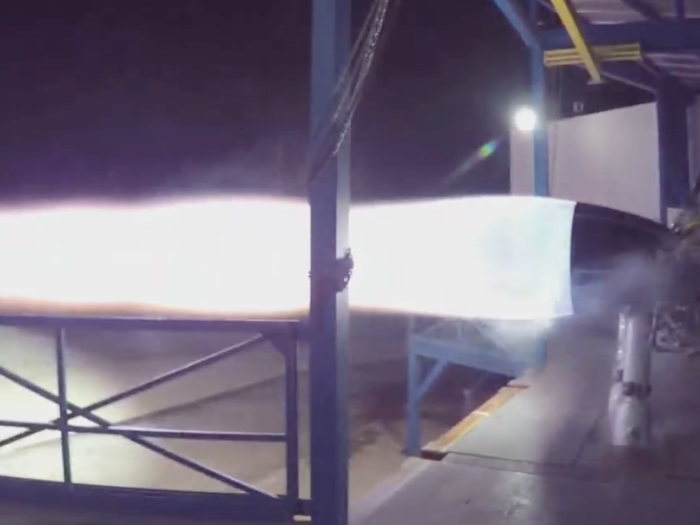
The timeline for sending Maezawa around the moon begins in 2023, though Musk said "it’s not 100% certain that we succeed in getting this to flight." And not just the moon mission, but the system SpaceX is designing.
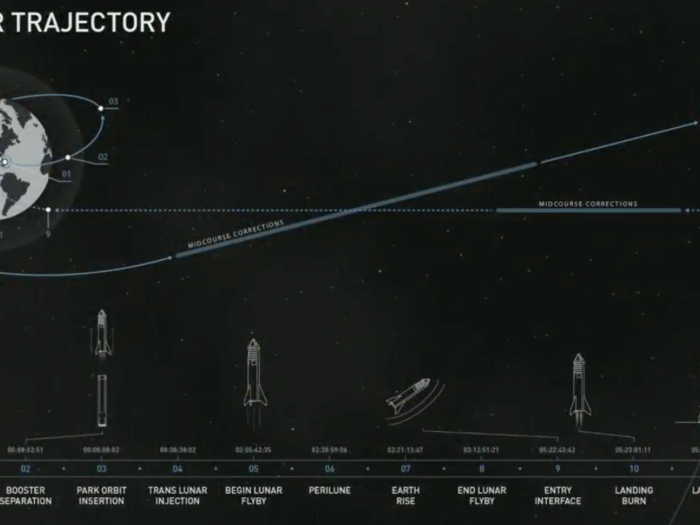
If all goes according to plan, though, Maezawa and his Bohemian crew will get into orbit and then fire off around the moon to make art.
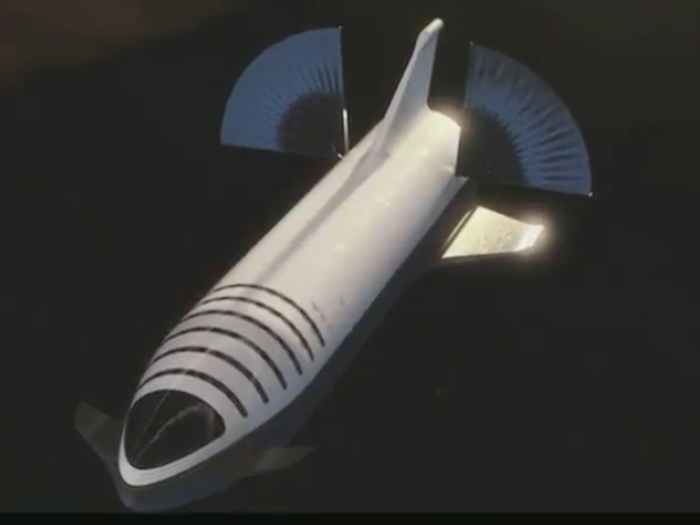
This imaginative rendering shows a spacious window that Musk originally had on the BFR in a 2016 presentation but reduced in 2017.

Ultimately, SpaceX hopes to use BFR to send the first crews to Mars, perhaps as soon as 2024, and Musk says Maezawa is helping power that development effort. "He's paying a lot of money that would help with the ship and its booster," Musk said. "He's ultimately paying for the average citizen to travel to other planets."

Popular Right Now
Popular Keywords
Advertisement